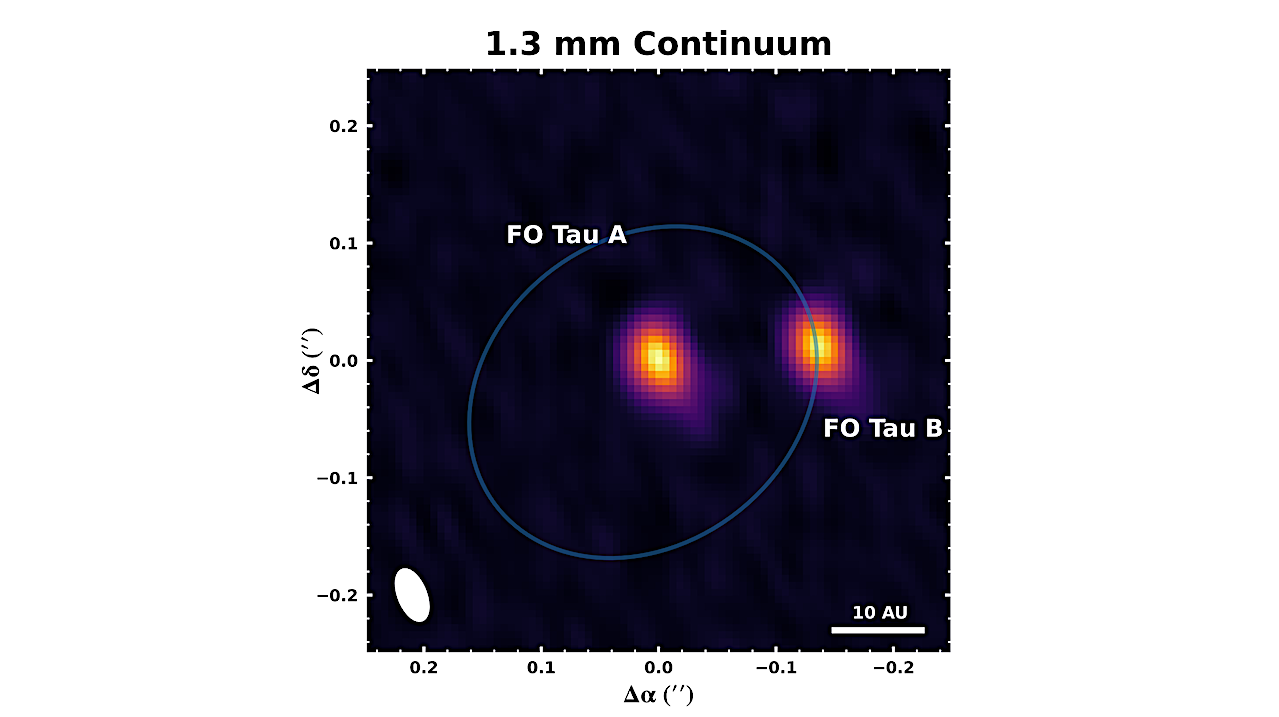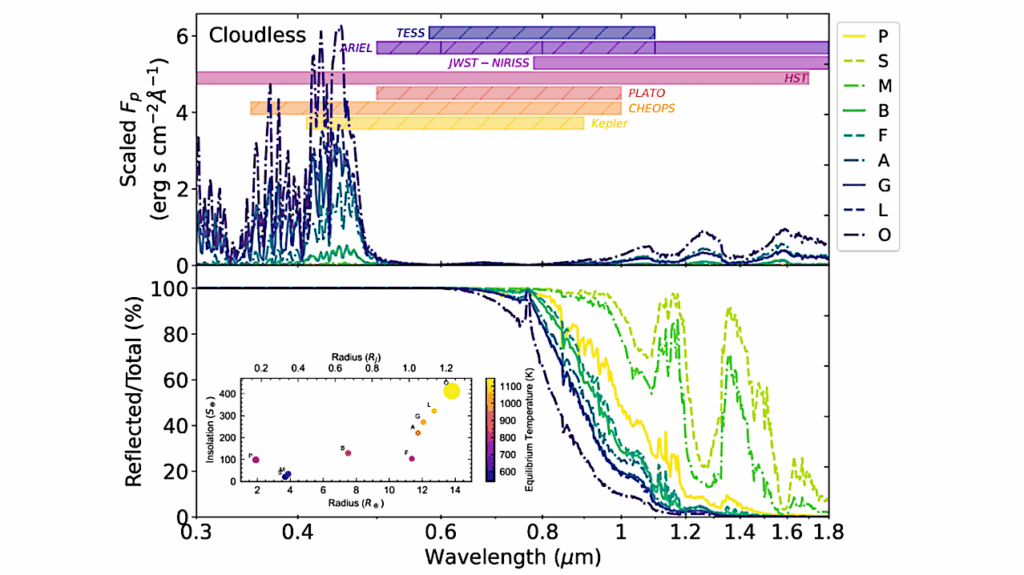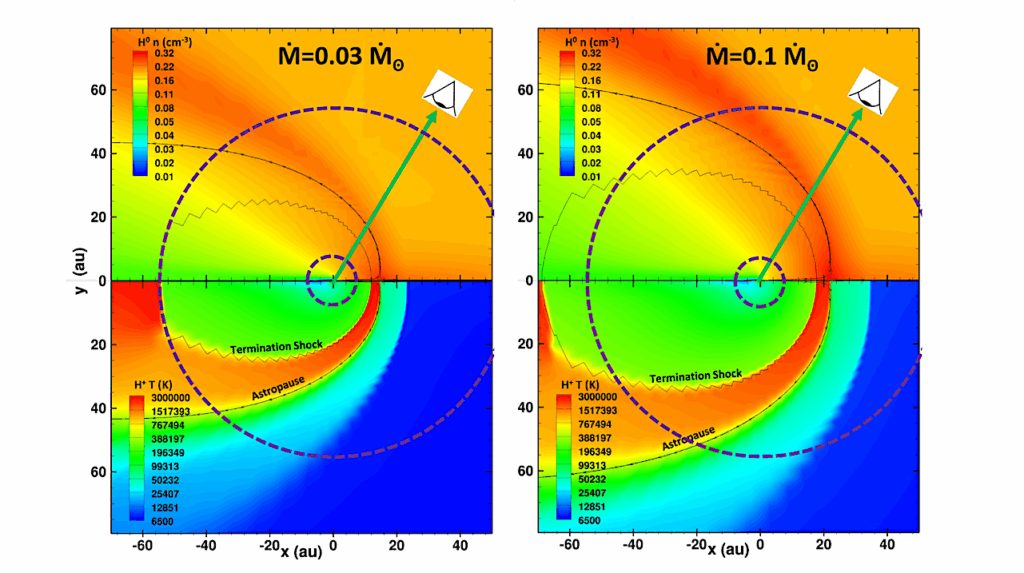Sites of Planet Formation in Binary Systems. I. Evidence for Disk-Orbit Alignment in the Close Binary FO Tau

Close binary systems present challenges to planet formation. As binary separations decrease, so too do the occurrence rates of protoplanetary disks in young systems and planets in mature systems. For systems that do retain disks, their disk masses and sizes are altered by the presence of the binary companion.
Through the study of protoplanetary disks in binary systems with known orbital parameters, we seek to determine the properties that promote disk retention and, therefore, planet formation. In this work, we characterize the young binary-disk system, FO Tau. We determine the first full orbital solution for the system, finding masses of 0.35+0.06−0.05 M⊙ and 0.34±0.05 M⊙ for the stellar components, a semi-major axis of 22(+2−1) AU, and an eccentricity of 0.21(+0.04−0.03). With long-baseline ALMA interferometry, we detect 1.3mm continuum and 12CO (J=2−1) line emission toward each of the binary components; no circumbinary emission is detected.
The protoplanetary disks are compact, consistent with being truncated by the binary orbit. The dust disks are unresolved in the image plane and the more extended gas disks are only marginally resolved. Fitting the continuum and CO visibilities, we determine the inclination of each disk, finding evidence for alignment of the disk and binary orbital planes.
This study is the first of its kind linking the properties of circumstellar protoplanetary disks to a precisely known binary orbit. In the case of FO Tau, we find a dynamically placid environment (coplanar, low eccentricity), which may foster its potential for planet formation.
Benjamin M. Tofflemire, Lisa Prato, Adam L. Kraus, Dominique Segura-Cox, G. H. Schaefer, Rachel Akeson, Sean Andrews, Eric L. N. Jensen, Christopher M. Johns-Krull, J. J. Zanazzi, M. Simon
Comments: AJ accepted, 29 pages, 14 figures
Subjects: Earth and Planetary Astrophysics (astro-ph.EP); Solar and Stellar Astrophysics (astro-ph.SR)
Cite as: arXiv:2403.13045 [astro-ph.EP] (or arXiv:2403.13045v1 [astro-ph.EP] for this version)
Submission history
From: Benjamin Tofflemire
[v1] Tue, 19 Mar 2024 18:00:00 UTC (12,192 KB)
https://arxiv.org/abs/2403.13045
Astrobiology








